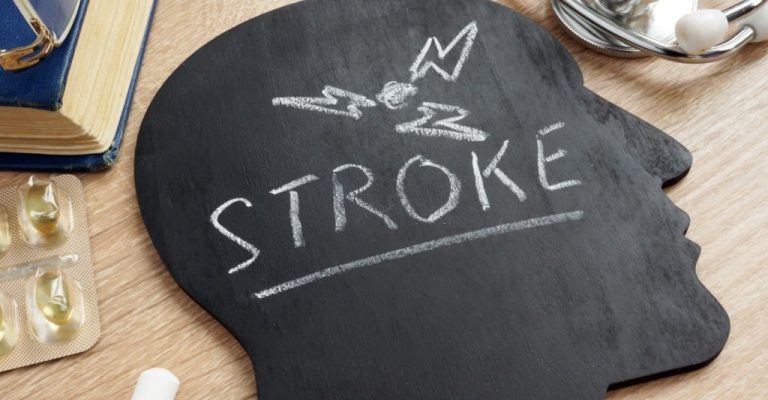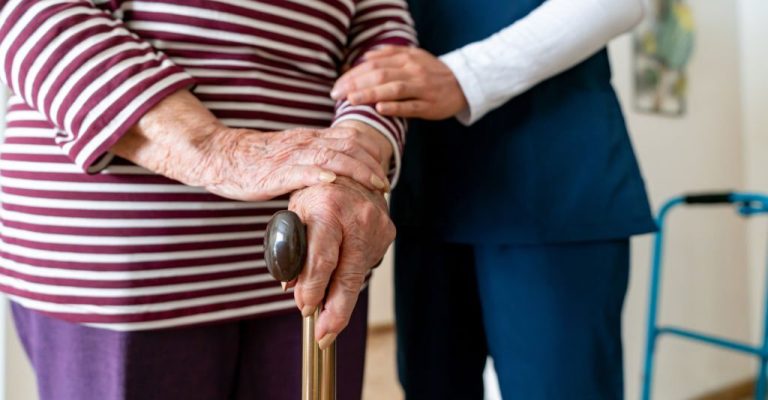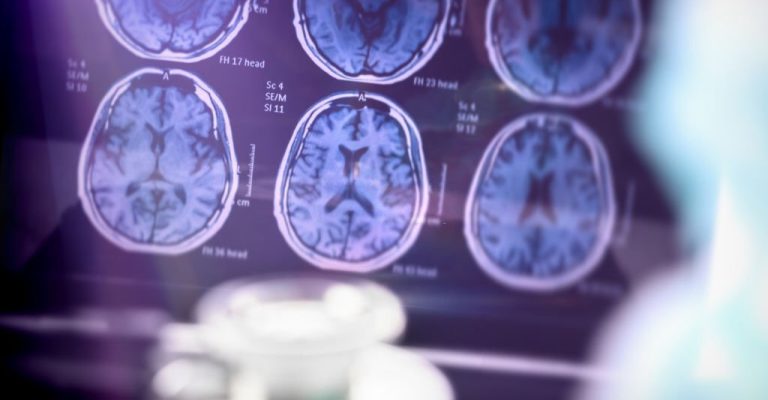
Suffering from a stroke can be one of the most challenging events a person will ever experience. Immediately following, there are so many unknowns: how long does it take to recover from stroke? What do you need to do during this time in order to make sure you get better as quickly as possible? Understanding the stroke recovery timeline is essential for planning and setting realistic expectations regarding rehabilitation and regaining full mobility.
In this post, we’ll cover all you need to know about recovering after a stroke, including factors determining your timeline and the type of support services available. Ready to learn more? Let’s dive into the details!
A stroke happens when the brain’s blood circulation is interrupted, either due to a blocked artery (ischemic stroke) or a ruptured artery (a hemorrhagic stroke). This prevents adequate oxygen-rich blood from reaching the damaged part of the brain. Therefore, to prevent permanent brain damage and preserve life, prompt medical attention is critical in the event of a stroke.
Several variables influence how long it is required to recover from a stroke, including the severity and site of the stroke, in addition to the patient’s age and general health. Moreover, the effectiveness of therapy depends on how quickly it is administered.
Strokes that affect smaller parts of the brain often result in a quicker recovery than bigger ones. But, unfortunately, there is no way to know for sure. As each stroke victim is unique, doctors agree that their road to recovery will also be individualized.

Two criteria, stroke location and size, are worth investigating further if you’re curious about your probable stroke recovery schedule.
The severity of a stroke affects how much brain tissue is damaged; a minor stroke frequently results in less damage and a quicker healing time. However, treatment and rehabilitation might take more time and effort if the stroke is severe.
When it comes to pinpointing precise locations, a stroke may impact several parts of the brain. As several parts of the brain are responsible for operating the body, this challenges the prognosis for a full recovery. Thus, the aftereffects will vary based on the region of the brain that’s been affected.
The length of time it takes for a person to recover from a stroke depends heavily on the severity and location of their particular stroke. The time it takes to recover after a stroke may also be impacted by the patient’s age and general health before the event. In most cases, a person’s ability to recover from a stroke depends on their age, health, and activity level before the stroke.
It might be helpful to have an idea of the range of possible outcomes as well as potential milestones in the rehabilitation and recovery process.

It bears restating that everyone experiences their stroke recovery in their own unique way. So, for example, even if two people have the same kind of stroke in the same part of the brain, their recovery times may differ.
A person with a stroke in the left hemisphere may have trouble speaking at all, whereas another may have trouble merely retrieving words. Recuperation times may vary substantially depending on the nature of the impairment.
It might be good to learn about typical stroke recovery time frames. This will give you a better idea how long it take to recover from stroke.
A stroke is a serious health crisis that needs immediate attention. Without treatment, more and more brain cells would die from a lack of oxygen-rich blood. Therefore, the stroke must be stopped immediately, and the patient must be treated urgently, or the patient will die.
A patient’s recovery from a stroke starts as soon as possible after treatment. Usually, this means skipping the waiting period and getting straight to rehabilitation. Rehabilitation must begin as soon as possible to make the most of the brain’s enhanced neuroplasticity and prevent the usual muscle atrophy that occurs while a patient is hospitalized.
The length of time you spend in an intensive care unit after a stroke might range from a few days to several weeks.
You’ll be working with a large group of doctors, nurses, and other medical professionals who will evaluate your current state and any long-term consequences, like cognitive or physical problems, you might have experienced.
Your ability to use the restroom, get dressed, and do other ADLs, will be carefully monitored by your medical staff to determine how well you are able to care for yourself.
The rehabilitation staff will work with you to develop a strategy for continuing your recovery after your discharge from the hospital. After leaving the hospital, you may complete your rehab in one of the following facilities, depending on your progress:
Attending an inpatient rehabilitation program may be an option if you need more time to heal than outpatient treatment can provide. Anybody with severe functional deficiencies but with effort expectancy and access to post-discharge support services has a good chance of being admitted into one of these institutions.
Subacute rehabilitation centers treat those who need less intensive care than acute rehabilitation centers. In this category, you could find a nursing home.
Several patients continue their treatment by occasionally visiting a clinic after leaving the hospital or rehabilitation center. Outpatient rehabilitation plays a vital role in recovery from any disease/condition.
Stroke survivors should expect to make significant strides toward recovery within the first three months after their stroke. Since the brain is still more malleable than usual, recovery is more effective in this window. It is still conceivable for spontaneous recovery to occur during this preliminary period.
Stroke survivors typically see their progress stall and even reverse during the first three months of treatment. However, most of those who have survived are now back in their homes, actively engaging in outpatient treatment and completing their rehabilitation on their own.
Stroke survivors should expect to reach personal recovery benchmarks at their own pace. If your stroke affects your gait, recovering your power of motion is a major goal for several stroke patients. The 6-month milestone might expect a favorable prognosis if you actively engage in therapy.
Research indicates that after 6 months of starting therapy, 65-85% of stroke patients will be able to walk without assistance. In addition, recuperation time may be lengthened for persons who have had a severe stroke.
At this stage, a complete recovery from an injury is probably out of the question by purely spontaneous means. Instead, a consistent rehabilitation regimen is necessary to sustain such positive outcomes. Thankfully, full functional recovery is achievable and can last a lifetime. If the patient keeps up with their therapy, they will get well.
The exact stage of a survivor’s healing process at the two-year mark cannot be predicted. Although some may have completely recovered, others may still be in the midst of the rehabilitative process.
Statistics show that at the end of two years, 74% of those who had a stroke and could not walk alone at the six-month mark would be able to do so. This is an excellent justification for continuing treatment in the recovery program.
In spite of the passage of time, the road to rehabilitation remains unique for each individual. Whether or whether you experience any long-term negative impacts from rehabilitation depends on your individual circumstances and how actively you engage in the process.
Researchers in one research revealed that intellectual and motor performance among stroke survivors remained at the same two-month post-stroke levels five years later. Unfortunately, you must hear this, but perhaps you’ll learn something from it.
Scientists believe that the rapid improvement seen in patients during the first two months of recovery is due to the intensive nature of inpatient rehabilitation. Many of the survivors in that research probably stopped going to outpatient sessions after being released from the inpatient facility.
Consequently, it is crucial to engage with therapy even after being released from inpatient care if you want to continue experiencing benefits in the weeks and months following a stroke. Although formal treatments at a clinic are usually not covered by health insurance at this point, so long removed from the stroke, this is when home rehabilitation programs may truly benefit.
Several aspects of your stroke rehabilitation timetable, like your age and the magnitude and site of your stroke, are beyond your control. But, there are several variables in which you have some say, such as how frequently you engage in at-home rehabilitation.
Those survivors who have faith in themselves and are dedicated to their recovery will benefit the most. Regaining lost skills and functions will need active participation from your reconfigured brain.
Reference:
https://www.cdc.gov/stroke/about.htm
https://www.ninds.nih.gov/health-information/disorders/stroke
https://www.ncbi.nlm.nih.gov/pmc/articles/PMC4106469/
https://www.sciencedirect.com/topics/nursing-and-health-professions/subacute-care
https://www.ncbi.nlm.nih.gov/pmc/articles/PMC6464717/